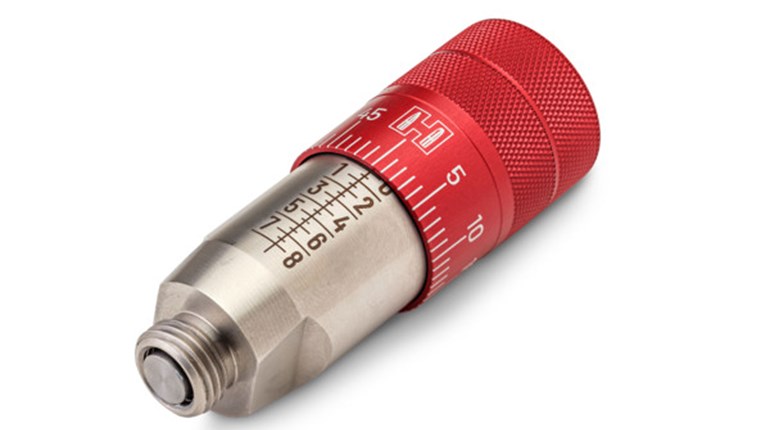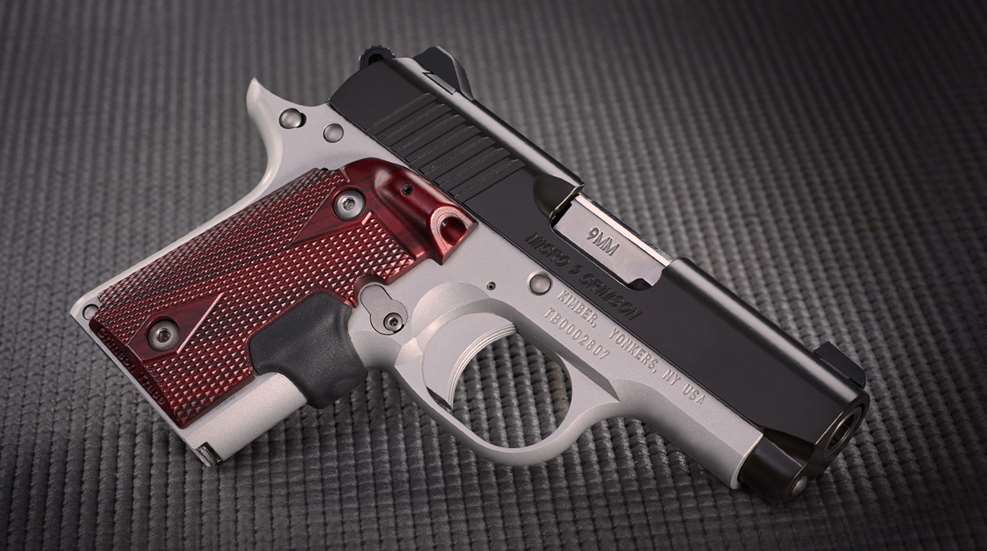
This feature appears in the January ‘17 issue of NRA America’s 1st Freedom, one of the official journals of the National Rifle Association.
Now and again, we feel like we’re caught in an infomercial, albeit a good one: “But wait! There’s more!” Funny how regularly this sensation coincides with the arrival of a box from Kimber.
If we’ve blundered our way over a literary or artistic sensibility this month, we apologize. But whether it is architect Mies van der Rohe’s design coda, or poet Robert Browning’s iambic pentameter, we see no good way to avoid the invocation of their “less is more” notion when it comes to Kimber’s Micro 9 Crimson Carry. As a dimensionally tiny, light pistol, it is assuredly “less.” But it is so packed with features and almost astonishing shootability that it decidedly qualifies as “more,” too. There, perhaps, is a second faux pas: We liked the diminutive Kimber a lot, and don’t mind saying so right off.
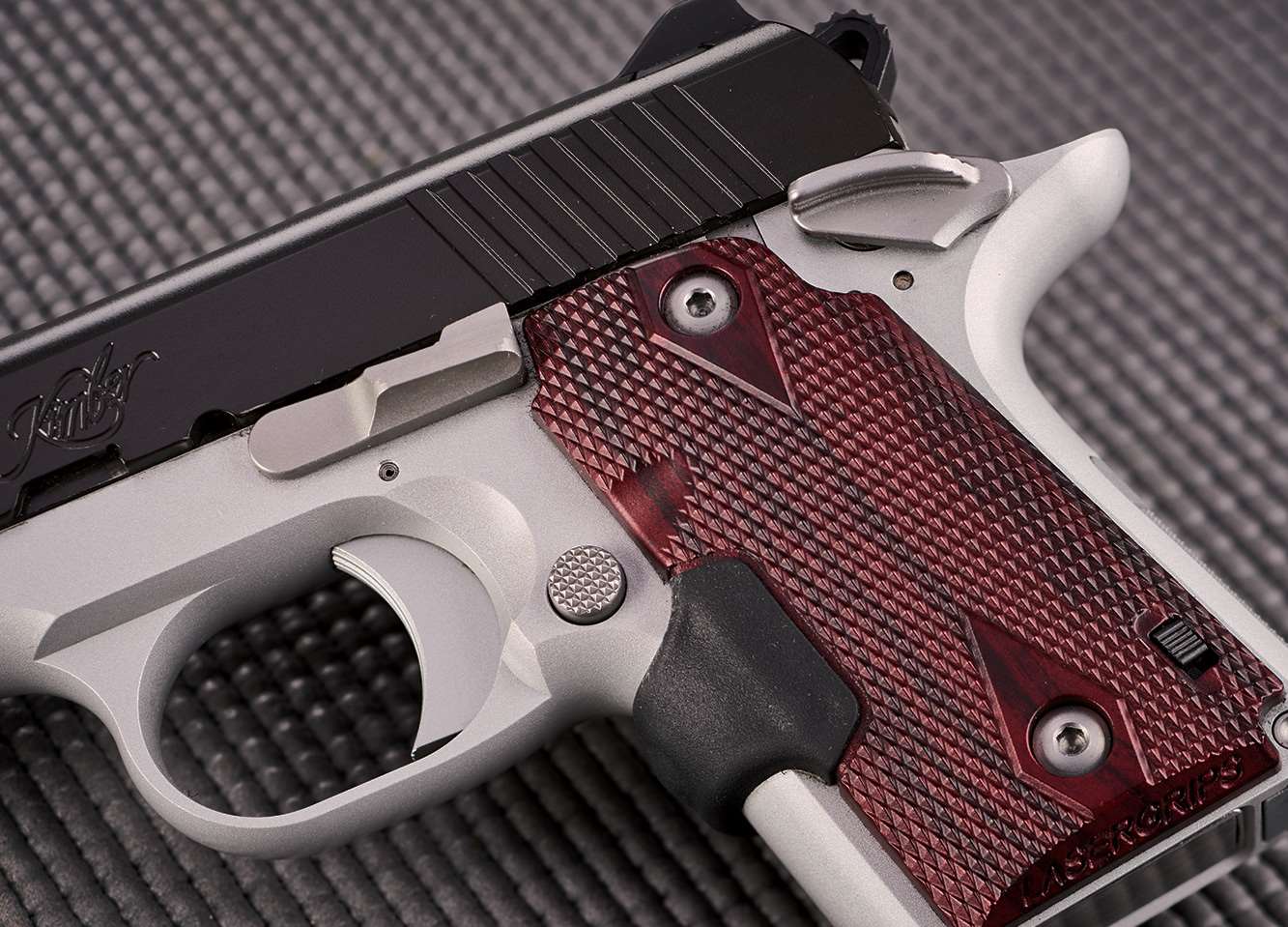
We would deny, however, that we started out with a predisposition. Our long experience with Kimber handguns, dating back even to the pre-Yonkers days, has been uniformly good. Still, there’s considerable (bitter) experience with pistols of very small dimensions to remind us of the inherent challenges, no matter how fine the pedigree. These begin with the small purchase most adult hands have on such pistols. They end with the physics of cartridge power and light firearm weight: 9 mm is a defensive caliber of consequence for “Micro” dimensions—a smidgeon over 6-by-4-by-1 inches and 19 ounces (loaded, 6+1).
Small and light plus powerful equals demanding; that’s all there is to it.
On the other hand, Kimber’s solution to those demands is impressive, too. Their experience with 1911 platforms, especially those of steadily declining footprint, is a good start. The Micro 9 reflects a conspicuous diet compared to the roughly 40-ounce Browning original, but like any successful weight-loss plan, it didn’t get there overnight. The result is a vastly trimmed, practical beauty—aluminum framed with a steel slide and reassuringly familiar controls. These factors go a long way to making the Micro friendly to 1911 fans, but by no means hostile to shooters without that experience. Small and light plus powerful equals demanding; that’s all there is to it.
Our test began with 200 or so rounds of standard fare—115- and 124-grain, round-nosed projectiles. In the “old days,” it wasn’t uncommon for 1911s to be balky in this phase of break-in. We saw no evidence of this with the wee Kimber; our only issues occurred very early on, and we think they were actually ammunition-sourced. The short throw and comparatively stiff recoil spring on the Micro 9—implicit on all similar-sized self-loaders—makes the whole class sensitive to underpowered loadings. A change of ammo lot got us back to work, and the cycling problems disappeared. They stayed gone, too, with everything from 90-grain HPs all the way up to 147s in both JHP and RN.
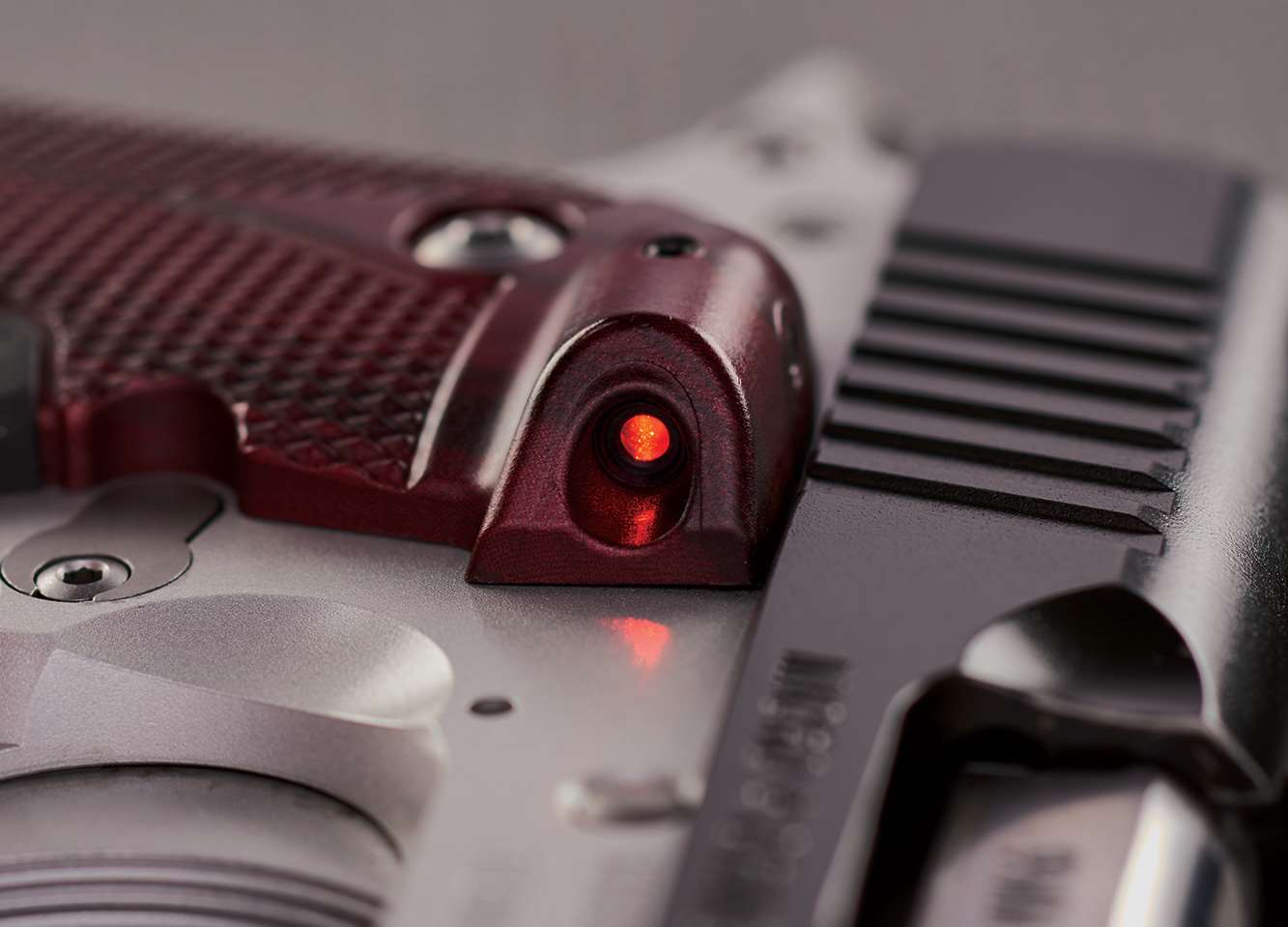
A major appeal of the Micro for many shooters will be the inclusion of Crimson Trace Laser Grips. This is somewhat misunderstood technology, but has potentially decisive application for some defensive shooting situations. The implementation is especially elegant on the Micro 9: Rosewood
double-diamond grip panels contain the power (2032 “coin” cell batteries), instant-on and master power switches, point-of-aim and designation hardware to put an intense red dot on your target.
But laser or no laser, we found the Micro 9 a disproportionately good shooter. The agreeably rugged steel sights hit a tad high for us, but rapid defensive hits in the “A” boxes were still an all-day affair. Predictable take-up in the trigger helped on the front end of the 6.5-lb. press, while the integrated beavertail made good follow-through and sight realignment intuitive, even in one-handed shooting.
One small gun characteristic was particularly striking in our range work. A long-envied capacity for others finally works for us on the Micro—that of curling the “pinky” finger tightly under the base of the magazine. This is not a new technique, but we were never enamored of it because it was acutely dimension-dependent between hand size and pistol. It worked on some guns, but was slow and somewhat fumble-prone. Not anymore: The base of our thumb compresses solidly and instantly against the up-pressure of the little finger, and gives a grip security nearly equivalent to a pinky-rest pad, yet without adding any length to the grip.
In a relative ocean of polymer competitors, we would observe that it took mettle for Kimber to offer a small 9 mm, especially one that is all, well, metal. On the other hand, it’s hard to find one that makes better use of 19 easy-toting ounces in a familiarly configured, accurate, versatile defensive caliber. These same factors urge us to a closing caution, though it isn’t Kimber Micro 9-specific. Small firearms have undeniable appeal for many reasons, and especially if “carry” is the goal. But they are also technique intensive, and some of those techniques have a particularly direct impact on safety, not merely utility. Don’t be surprised if your present skills don’t cover the differences you are certain to encounter; do get additional training.
On a Kimber Micro 9 Crimson Carry, the rewards are likely to be striking. In a relative ocean of polymer competitors, we would observe that it took mettle for Kimber to offer a small 9 mm, especially one that is all, well, metal.
Nuts And Bolts
Small pistols of any action type can be hard to love. Their dimensions alone decree they’ll be harder to handle—ounce for ounce and inch for inch, and in proportions inverse to their power (that Isaac Newton guy, again). That proportion is what we think puts Kimber’s Micro 9 in the very top rank of small 9 mms at present—namely, “better,” or “smaller”—though we’d suggest some special considerations are due.
Trigger
A discerning eye will gather a difference in the Micro 9 trigger that ascends, if you will, from the .380 ACP micros, rather than descending from the Ultra CDP II (America’s 1st Freedom, November 2015) and larger 1911s—a pivoting trigger. We don’t think this good or bad, but mainly different in operational terms. If you’re used to a 1911, you’ll find that reset isn’t the same as the straight back press of the larger versions; when shooting, you might actually think something is wrong with the trigger. We adapted after just a few magazines, and this was off our radar altogether after a couple hundred rounds.
Laser
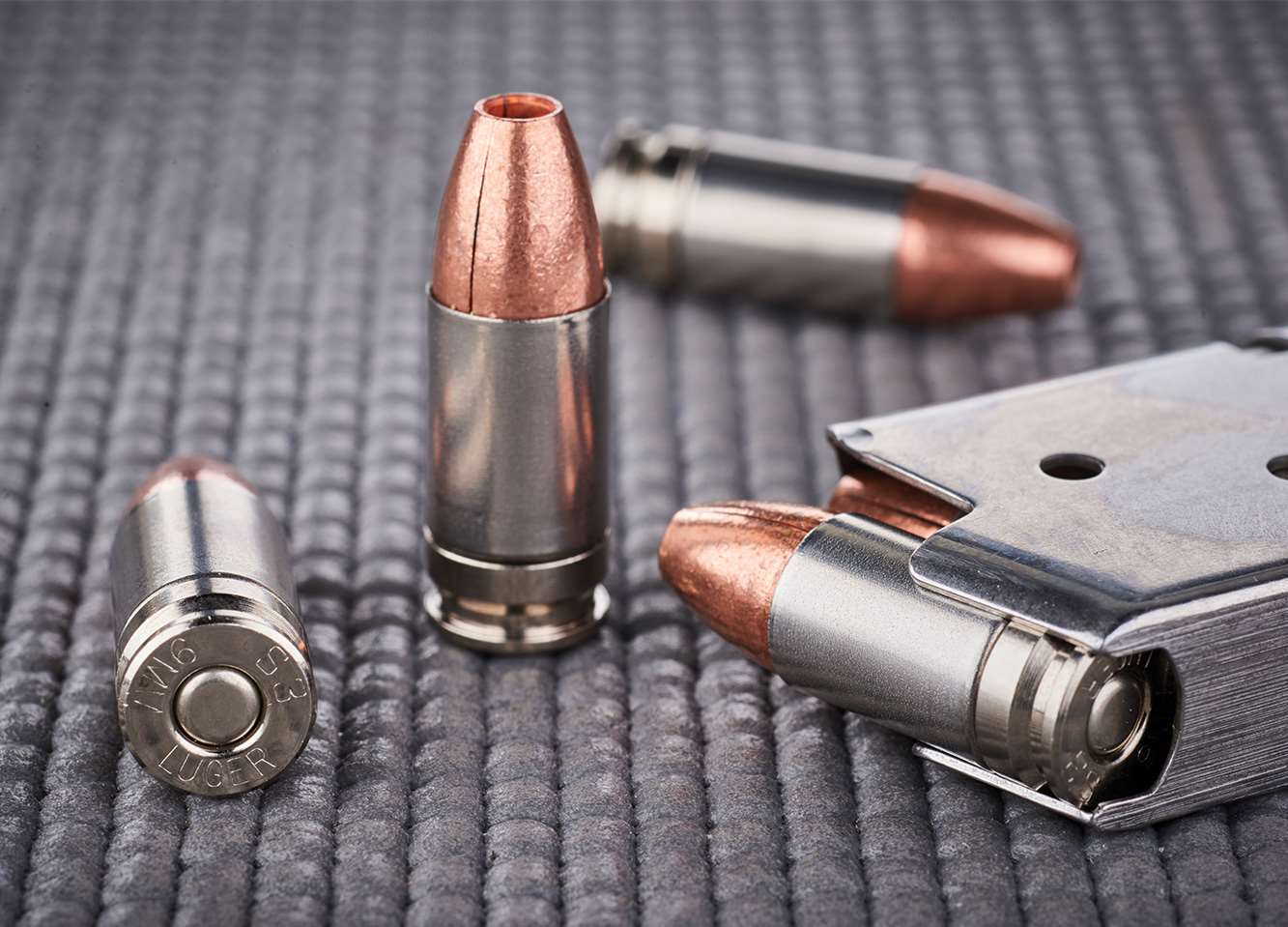
Using a laser correctly is a skill in and of itself, and should be undertaken with genuine knowledge of the aiming problem you’re trying to solve. But one defensive arena puts a laser-equipped pistol at a huge advantage, and that’s close quarters. There may be times when you cannot or do not want to extend your hands/arms to make a shot, and a laser equipped pistol tells you with considerable precision where such a shot will strike without looking over or even being able to see the conventional sights. It is a safety advantage in many senses, both for shoot and no-shoot circumstances.
Ammunition
We shot some +P ammo in the Micro 9, but we cannot recommend it. This is no indictment of Kimber or the otherwise fine Micro—indeed, the Kimber is rated for it, and the two varieties we shot produced impressive accuracy (Hornady Critical Defense/135 and Creedmoor SST/124). Rather, it’s a recognition of those physical (and physics) realities: These extremely energetic ammunition types exaggerate all the things that make small guns difficult to master—dramatic recoil signatures, muzzle flashes and report. Down the line, you may want or need to step up your defensive ammo to this level, but do so only after substantial practice, and knowing full well what you’re getting into.














